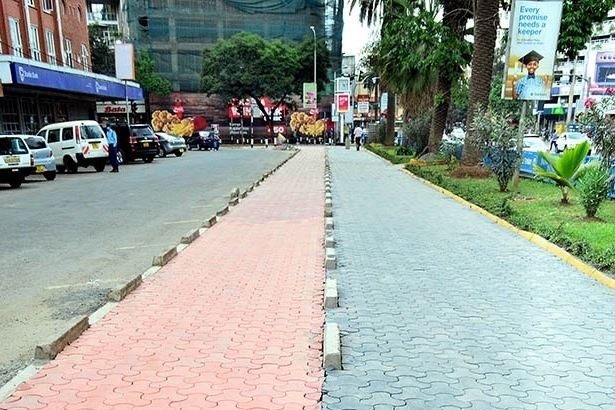

In Nairobi, Kenya, only 15% of journeys are made by private cars. Most are on foot or by bicycle. However, for decades, new road construction and upgrades have overlooked the safety of pedestrians and cyclists, leaving them exposed to fast, aggressive, and dangerous traffic.
According to the Nairobi Integrated Urban Development Master Plan (NIUPLAN), almost half of all walking in Nairobi (46.7%) involves school journeys, yet lack of footpaths was one of the key issues identified in four out of five of the school zone assessments conducted by Alliance Advocates between 2018-2019. In Kenya, children and teenagers constitute 21% of people who die in road crashes according to data from the National Transport and Safety Authority (NTSA). Few people in low-income areas can afford private motor vehicles, yet the new footpaths and cycle paths that have already been built have primarily benefited affluent neighborhoods where car ownership is more achievable.
The Non-Motorized Traffic Policy passed in 2015 included a requirement to implement safe footpaths and cycle lanes on major streets. Yet, five years on, primarily as a result of political issues, progress on implementation of the cycle and pedestrian lanes had barely started.
With World Bank funding coming to an end this year, a new body, Nairobi Metropolitan Services (NMS), was created to fast-track not only the walking and cycling elements of NUIPLAN but also parks, urban planning, and housing. Rapid progress has followed. In its first 100 days, NMS, working with the Kenya Urban Roads Authority (KURA), has already overseen the building and improvement of footpaths and cycle paths along many major streets in the city. A large number of school zones have been made safer, including three previously identified by Alliance Advocates: Moi Avenue Primary, Mbagathi and Kinyanjui road primary schools. More vulnerable school in Nairobi Metropolitan area are set benefit from this fast-paced work. When children return to school (which now may not be until 2021 due to the pandemic), their routes will be safer and they will no longer need to walk along the edge of the road without separation from the busy motorized traffic. It will also enable them to social distance more easily.
NMS and KURA are also installing footpaths and cycle lanes on major arteries in Nairobi’s central business district, with the aim of reducing car usage and to address the congestion that plagues Nairobi. Unsurprisingly, the new infrastructure has led to a backlash from motorists, angry at the loss of street parking spaces in the city (new spaces will be created in silos and sunken parking lots).
We asked some Alliance member NGOs for their view on the infrastructure changes. “The non-motorized transport infrastructure developments are welcome and long overdue,” said Bright Oywaya, ASIRT Kenya. “For a county where the majority of the people walk, it only makes sense to focus on the majority. Social distancing cannot be possible where there are no facilities that support it. The construction of pedestrian walkways and cycling lanes makes it possible for more people to walk or cycle safely, thus minimizing the risk of infection from the COVID-19 virus and also the risk of being involved in road crashes as traffic mix is eliminated.”
The work in Nairobi demonstrates the significance of political will and motivation to effect change and it proves that meaningful action can be achieved extremely quickly when the urgency is understood.
The post Long Wait Over for Pedestrians in Nairobi appeared first on Global Alliance of NGOs for Road Safety.